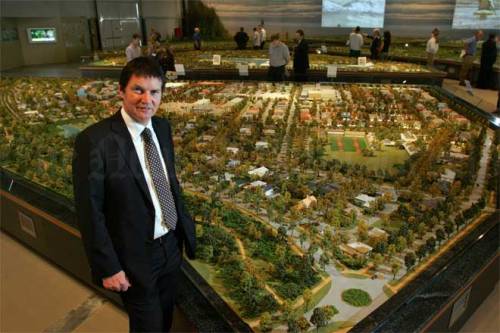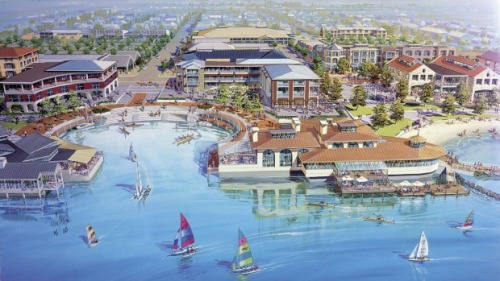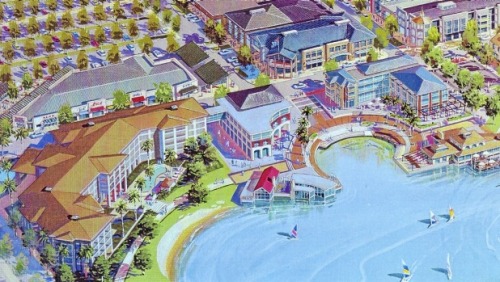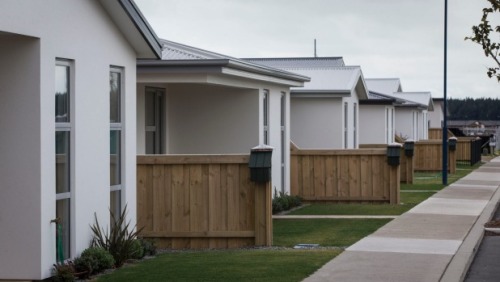Dunedin City has New Zealand’s largest historic heritage resource.
The following is taken from three pages of the English Heritage HELM Historic Environment Local Management website:
1. Tall Buildings
2. Regeneration
3. Building in Context
****
TALL BUILDINGS

Guidance on tall buildings update
The English Heritage and Design Council CABE 2007 joint Guidance on tall buildings is a material consideration in the determination of planning applications for tall buildings.
Guidance on tall buildings
Guidance on Tall Buildings sets out how English Heritage and Design Council CABE evaluate and consider proposals for tall buildings. It also offers advice on good practice in relation to tall buildings in the planning process. Both organisations recommend that local planning authorities use it to inform policy making and to evaluate planning applications for tall buildings where the appropriate policies are not yet in place and the Government has endorsed this guidance.
This revised version was endorsed by Government on 26 July 2007. The Parliamentary Under-Secretary of State for Communities and Local Government (Mr. Iain Wright) said:
“In conjunction with my colleague the Minister for Culture, Creative Industries and Tourism, Department for Culture, Media and Sport, I would like to bring to the attention of the House the guidance note on tall buildings prepared jointly by English Heritage and the Commission for Architecture and the Built Environment (CABE), which is published today. This updates and supersedes previous guidance published in 2003 and reflects changes to the planning system since that time.
The Government’s aim is to ensure local planning authorities are getting the right developments in the right places, which we consider to be a fundamental part of creating places where people will want to live and work, now and in the future. Recent reforms to the planning system have helped to reinforce this message, making clear that all new development should be of good quality and designed in full appreciation of its surroundings and context. Tall buildings, in the right places and appropriately designed, can make positive contributions to our cities.
The Government therefore welcome this updated guidance, which will assist local planning authorities when evaluating planning applications for tall buildings, including, importantly, the need for effective engagement with local communities. It also places a greater emphasis on the contribution that design can make to improving the character and quality of an area. It offers good practice guidance to a range of stakeholders in relation to tall buildings in the planning process, provides practical advice on achieving well-designed solutions in the right places, and is capable of being material to the determination of planning applications. Copies of the documents are being placed in the Libraries of both Houses.”
The Guidance and the National Planning Policy Framework
The approach set out in the Guidance is consistent with the National Planning Policy Framework (NPPF). At the heart of the NPPF is the presumption in favour of “sustainable development”. Pursuing sustainable development involves seeking improvements to the quality of the built and historic environment (paragraph 9) as well as economic, social and environmental progress generally. Paragraph 17 identifies 12 core principles that should underpin both plan making and decision taking, including securing high quality design and a good standard of amenity for all existing and future occupants of land and buildings, taking account of the different roles and character of different areas; conserving heritage assets in a manner appropriate to their significance.
The Government attaches great importance to the design of the built environment. Permission should be refused for development of poor design that fails to take the opportunities available for improving the character and quality of an area and the way it functions (paragraphs 56 and 64). Planning decisions should ensure amongst other things that developments respond to local character and history (paragraph 58). Planning decisions should also address connections between people and places and the integration of new development into the historic environment (paragraph 61).
Local Planning Authorities should set out their strategic priorities for the area which should include strategic policies to deliver the conservation and enhancement of the natural and historic environment, including landscape (paragraph 156). Crucially, local plans should identify land where development would be inappropriate, for instance because of its environmental or historic significance. They need to contain a clear strategy for enhancing the natural, built and historic environment where they have been identified. – paragraph 157. This follows on from the requirement that local plans should set out the opportunities for development and clear policies on what will or will not be permitted and where (paragraph 154).
It is also important to note that local planning authorities should have up to date evidence about the historic environment in their area and use it to assess the significance of heritage assets and the contribution they make to their environment (paragraph 169).
Link
Download
Guidance on tall buildings 2007 (71 KB)
****
REGENERATION
The historic environment is the context within which new development happens. Major inner city renewal, rural diversification, edge of village development, traffic calming measures: all have the potential to enhance or degrade the existing environment and to generate time- and resource-hungry conflict. An early understanding of the character and value of the historic environment prevents conflict and maximises the contribution historic assets can make to future economic growth and community well-being.
Conservation-led regeneration encourages private-sector investment both by retaining businesses in an area and by providing an incentive to relocate to it. Putting resources into a neighbourhood because of the value of what is already there, rather than labelling it as deprived, builds community and business confidence. So do works to improve the maintenance of the public realm of streetscape and public parks and gardens.
Understanding how places change, what makes them distinctive and the significance of their history is the key to regeneration. The historic environment is part of successful regeneration because it contributes to:
● Investment: Historic places attract companies to locate, people to live, businesses to invest and tourists to visit. Market values in historic areas are higher than elsewhere.
● Sense of place: People enjoy living in historic places. There is often greater community cohesion.
● Sustainability: Re-use of historic buildings minimises the exploitation of resources. There is evidence of lower maintenance costs for older houses.
● Quality of life: The historic environment contributes to quality of life and enriches people’s understanding of the diversity and changing nature of their community.
Planning for regeneration and renewal requires strong, effective partnerships at local and regional level. Local authorities play a central part in the management of the historic environment. The Local Authority Historic Environment Services pages give more information about the role of local authorities.
Conservation-led regeneration is successful because places matter to people. Neighbourhood renewal works because the quality of the places in which people live directly affects their quality of life. When communities are helped to develop their own sense of what matters for them, and why, the results can transform a neighbourhood and act as a catalyst for further private- and public-sector investment.
Link
Further reading
Regeneration and the Historic Environment
Heritage & Spin-off benefits
Heritage Works
Regeneration in Coastal Towns
Websites
English Heritage Regeneration Policy
The Heritage Dynamo: how the voluntary sector drives regeneration
Prince’s Trust Regeneration Through Heritage Handbook
****
BUILDING IN CONTEXT
Building in Context was published jointly by English Heritage and CABE (the Commission for Architecture and the Built Environment) in 2001. It aims to stimulate a high standard of design when development takes place in historically sensitive contexts. It aims to do this by example, showing a series of case studies in which achievement is far above the ordinary. As a result, it is hoped that people will be encouraged to emulate the commitment and dedication shown by the clients, architects, planning officers and committee members involved in the projects illustrated and be able to learn from their experience.
The belief underlying the publication is that the right approach is to be found in examining the context for any proposed development in great detail and relating the new building to its surroundings through an informed character appraisal. This does not imply that any one architectural approach is, by its nature, more likely to succeed than any other. On the contrary, it means that as soon as the application of a simple formula is attempted a project is likely to fail, whether that formula consists of ‘fitting in’ or ‘contrasting the new with the old’.
A successful project will:
● Relate well to the geography and history of the place and the lie of the land
● Sit happily in the pattern of existing development and routes through and around it
● Respect important views
● Respect the scale of neighbouring buildings
● Use materials and building methods which are as high in quality as those used in existing buildings
● Create new views and juxtapositions which add to the variety and texture of the setting.
The right approach involves a whole process in addition to the work of design, from deciding what is needed, through appointing the architect, to early discussions with and eventual approval by the planning authority.
Collaboration, mutual respect and a shared commitment to the vision embodied in the project will be needed if the outcome is to be successful. The report came to a number of conclusions:
● All successful design solutions depend on allowing time for a thorough site analysis and careful character appraisal of the context
● The best buildings result from the creative dialogue between the architect, client, local planning authority and others; pre-application discussions are essential
● The local planning authority and other consultees can insist upon good architecture and help to achieve it
● Difficult sites should generate good architecture, and are not an excuse for not achieving it
● With skill and care, it is possible to accommodate large modern uses within the grain of historic settings
● High environmental standards can help generate good architecture
● Sensitivity to context and the use of traditional materials are not incompatible with contemporary architecture
● Good design does not stop at the front door, but extends into public areas beyond the building
● High-density housing does not necessarily involve building high or disrupting the urban grain and it can be commercially highly successful
● Successful architecture can be produced either by following precedents closely, by adapting them or by contrasting with them
● In a diverse context a contemporary building may be less visually intrusive than one making a failed attempt to follow historic precedents
The above are extracts from the document, which was written by Francis Golding. The case studies were chosen to cover a wide range of different uses, locations, architectural approaches and processes. Each case study looks at the project as a whole, the site, the problems, the solutions and the lessons learnt.
The full text of Building in Context and its case studies are available on-line from the PDF version of the document.
Link
Download
Building in context: New development in historic areas (2.94 MB)
—
Posted by Elizabeth Kerr
 The urban design team(?!) lost it before they ever got it.
The urban design team(?!) lost it before they ever got it. Thanks to irresponsible building owners and ‘know-it-all-bend-the-rules’ city officials (friends of the irresponsible owners), this mural was applied to raw red brick in the side alley at 98 Bond St —contrary to the Dunedin City District Plan for listed precincts. This industrial building, a rare remnant, dates to the 1860s.
Thanks to irresponsible building owners and ‘know-it-all-bend-the-rules’ city officials (friends of the irresponsible owners), this mural was applied to raw red brick in the side alley at 98 Bond St —contrary to the Dunedin City District Plan for listed precincts. This industrial building, a rare remnant, dates to the 1860s.










































![JW House exisiting [deltapsych.co.nz]](https://dunedinstadium.wordpress.com/wp-content/uploads/2014/11/jw-house-exisiting-deltapsych-co-nz.jpg?w=500&h=355)


![John Wickliffe House [primecommercial.co.nz] 1](https://dunedinstadium.wordpress.com/wp-content/uploads/2014/07/john-wickliffe-house-primecommercial-co-nz-1.jpg?w=500&h=350)















![St Joseph - Buchanan County Courthouse [commons.wikimedia.org]](https://dunedinstadium.wordpress.com/wp-content/uploads/2013/07/st-joseph-buchanan-county-courthouse-commons-wikimedia-org2.jpg?w=500&h=276)
![St Joseph - Downtown cnr Francis St and North 4th St [commons.wikimedia.org] 1](https://dunedinstadium.wordpress.com/wp-content/uploads/2013/07/st-joseph-downtown-cnr-francis-st-and-north-4th-st-commons-wikimedia-org-1.jpg?w=500&h=330)
![St Joseph - Downtown skyline 2006 [commons.wikimedia.org] 1](https://dunedinstadium.wordpress.com/wp-content/uploads/2013/07/st-joseph-downtown-skyline-2006-commons-wikimedia-org-1.jpg?w=500&h=143)



![Dunedin Central Fire Station, Castle St 2 [commons.wikimedia.org]](https://dunedinstadium.wordpress.com/wp-content/uploads/2013/07/dunedin-central-fire-station-castle-st-2-commons-wikimedia-org1.jpeg?w=500&h=110)














